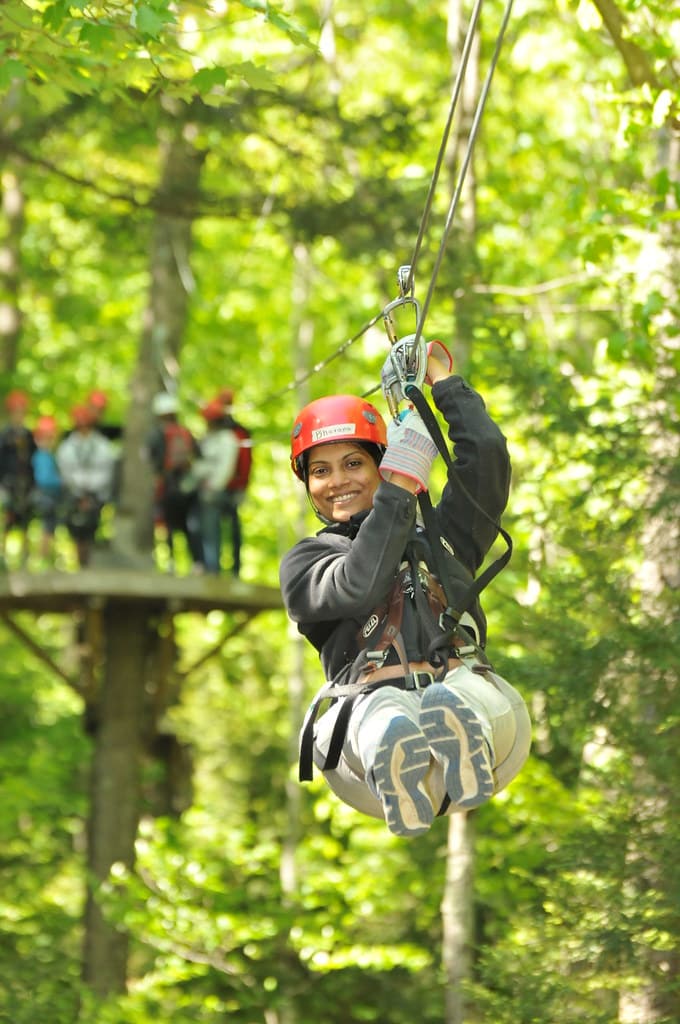Can you Zipline While Pregnant?
Can an expecting mother partake in a ziplining experience? This is a highly relevant question as the safety of both mother and child during this time is of utmost importance.
Can you Zipline While Pregnant?
No, it’s not recommended for pregnant women to zipline.
While the adrenaline-filled experience of ziplining can be thrilling, pregnant women should refrain from engaging in this pursuit due to potential risks. The physical exertion required can lead to increases in blood pressure and heart rate, which could place an additional burden on both mother and child alike. Therefore, caution should be exercised, and other activities explored instead.
Risks Involved in Ziplining While Pregnant
When examining the associated dangers of participating in a ziplining activity while pregnant, it is vital to consider that this exertion can be physically taxing and may potentially inflict harm through falls or other injuries. The body of a pregnant woman goes through significant alterations, including changes in their center of gravity which make them liable to accidents. Furthermore, abrupt movements and jolts caused by ziplining could be detrimental for an unborn baby.
Engaging in ziplining also necessitates harnessing to a cord and sliding down from a considerable height, which can be particularly hazardous should one experience a fall during the course of the activity. Moreover, pregnant women are susceptible to vertigo, dizziness or nausea, conditions that may be exacerbated by being so high up and moving at high speed.
Additionally, the corresponding equipment and harnesses crafted for ziplining may not be suited for use by expecting women, as they are designed to fit individuals with certain dimensions, failing to provide enough security or comfort for pregnant women and thus constituting an increased hazard of destruction or injury.
Alternatives to Ziplining While Pregnant
When it comes to alternate forms of activity for pregnant women, there are a selection of options that render far less risk than that of ziplining. Examples such as outdoor adventures like hiking, biking, swimming, and stand-up paddleboarding, each provide their own physical and emotional advantages.
For those wishing to pursue hiking, the key is to find suitably maintained routes and prepare accordingly. This means ensuring adequate food and drink is brought along, while wearing comfy shoes and weather-appropriate attire. Alternatively, paved bike paths can also offer some beneficial physical exercise in the great outdoors. When opting for swimming or stand-up paddleboarding, these activities should be undertaken in a secure and monitored environment. Similarly, nature walks allow an opportunity to indulge in the scenery with light exercise.
It is important to bear in mind that any task carried out during pregnancy should always remain within your own capabilities; simply put, do not attempt anything beyond your physical capacity. Additionally, it is recommended by medical professionals that you seek advice prior to engaging in these activities.
Ziplining Safety Measures
It is paramount to take the necessary precautions to lower the chance of suffering an injury. This includes ensuring that you have all the required safety equipment, such as a helmet and harness, that the machinery used is in proper condition, and that the location is secure. Additionally, it is imperative to inspect the machinery for any signs of wear or damage and make sure that it is correctly fitted to your body.
Furthermore, it is essential to guarantee that the zipline is correctly anchored and that the landing area is free from hazards. Also, it should be noted that even if all the necessary protective measures are undertaken, there is still a possibility of sustaining an injury when taking part in activities like ziplining.
As such, it is essential to be mindful of the risks and be attentive to one’s own wellbeing. If you feel unwell, experience pain or discomfort, it is best to pause the activity and seek medical assistance if needed.





